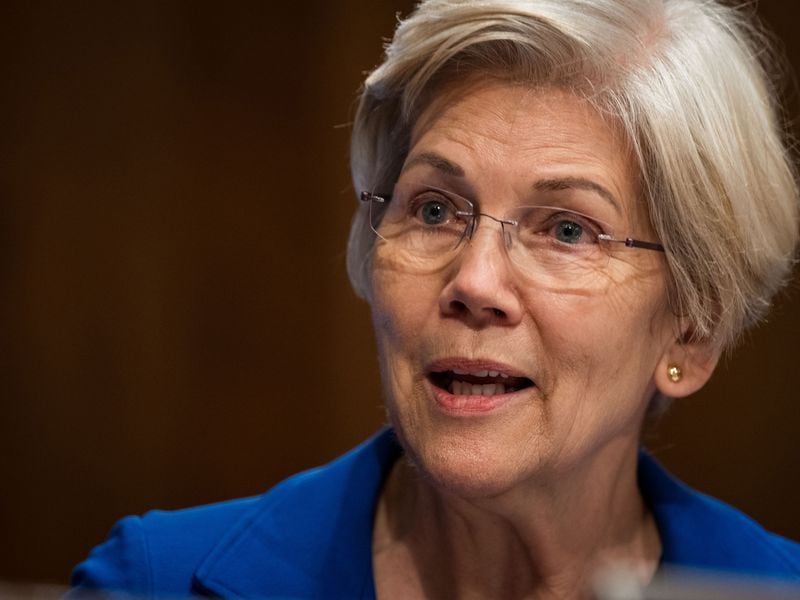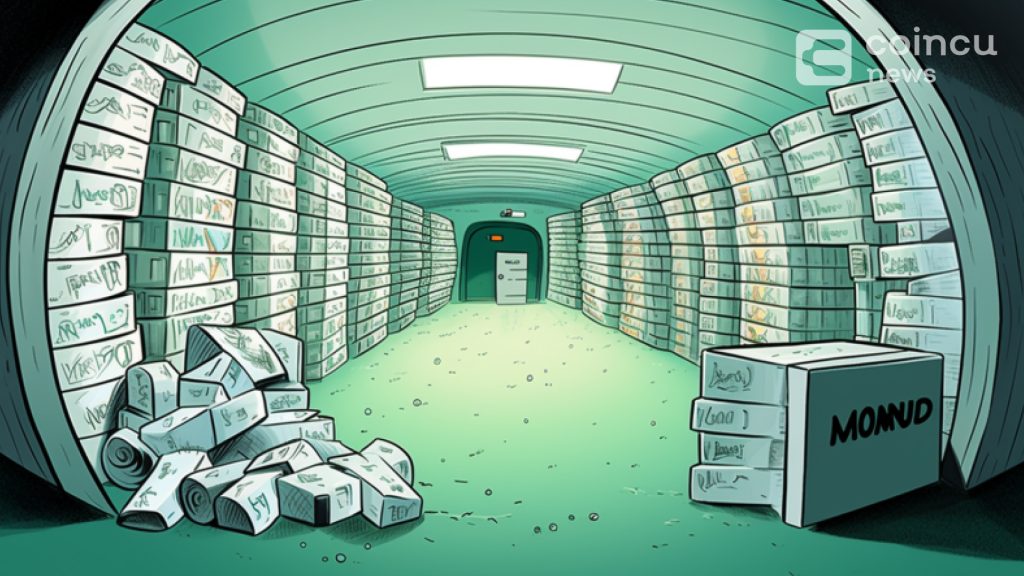Ethereum Nears $1 Billion Annual Profit as Q1 Earnings Surge
In the first quarter of 2024, Ethereum saw a 200% increase in income compared to Q4 of 2023. Now Ethereum is on a trajectory towards $1 billion in annualized profits. This growth was driven largely by a surge in DeFi activities. The total value locked (TVL) in DeFi reached highs around $97 billion. Additionally, Degen Chain, a new Ethereum layer-3 network, recorded the highest transaction per second (TPS) rate in the ecosystem, although its economic impact is still a bit limited due to low average transaction values.
Ethereum Gains Momentum with a Strong Start in 2024
Ethereum's financial performance in the first quarter of 2024 positioned it on a trajectory towards $1 billion in annualized profits after it recorded $365 million in Q1 income. This is an impressive 200% increase from Q4 of 2023. According to an Apr. 17 report by The DeFi Report analyst Michael Nadeau, this surge in profitability is coupled with a year-on-year quarterly revenue growth of 155%. The network's fee revenue alone, which was generated from transaction payments by users, soared to $1.17 billion, also up from the previous year and showing an 80% rise from the last quarter.
Ethereum’s yearly profit and loss since launching in 2015. Source: The DeFi Report
This financial uptick is mostly attributed to increased network activity, which is fueled by a surge in DeFi (Decentralized Finance) activities. In fact, the average daily transactions on the Ethereum blockchain have already surpassed last year’s figures and are nearing the peak activity levels of 2021. The daily transactions averaged more than 1.15 million in 2024, a slight increase from 1.05 million in 2023.
Interestingly, 2023 was Ethereum's first profitable year since its inception in 2015, earning $623 million despite having revenues that were 75% lower than its peak $9.9 billion in 2021. This was largely due to Ethereum’s transition to a proof-of-stake consensus in September of 2022, which greatly reduced the token incentives paid to miners, now called validators, by about 80%.
Nadeau also pointed out a consistent growth in Ethereum’s fees at a rate of 58% since 2017. Looking ahead, he is still pretty optimistic about the cryptocurrency market, predicting that "crypto will outperform everything else" in the years to come. This positive outlook is supported by anticipated favorable liquidity conditions in the U.S., potential rate cuts by the Federal Reserve, and a bullish setup that could be catalyzed by factors like U.S. spot Bitcoin exchange-traded funds, the upcoming Bitcoin halving, and a vibrant innovation cycle in the crypto space.
Additionally, Nadeau also made sure to point out the correlation between Bitcoin and Ether. He believes that while Bitcoin often leads in the early stages of a bull market due to its high recognition, ETH and other altcoins usually surpass it later in the cycle. Nadeau thinks this trend is very likely to continue, especially with altcoins that have a clear product-market fit.
DeFi TVL Nearly Doubles in Q1 2024
The total value locked (TVL) in DeFi has also seen a huge surge in the first quarter of 2024, with the figure almost doubling from the previous quarter's low. According to data from DefiLlama, the TVL in DeFi climbed from $36 billion at the end of 2023 to a high of almost $97 billion in early 2024. This is an 81% increase! The figure also reached a two-year peak of $98 billion last week. However, the DeFi TVL has dropped a bit to $88.113 billion at press time.
Research firm Messari reveals a slightly higher TVL, noting that the value of collateral in DeFi reached $101 billion on Apr. 18, which is a 65.6% increase from the previous quarter. This growth is very likely due to the appreciation of underlying asset prices and the influence of liquid restaking initiatives, specifically those related to Ethereum, which alone saw its TVL grow by around 71%.
The Liquid staking TVL skyrocketed to an all-time high of $63 billion on Mar. 13, mostly driven by the leading liquid staking protocol, Lido, which now has a 62% market share of this ecosystem. Liquid restaking protocols like EigenLayer are also responsible for the expansion of the TVL. In the first quarter of 2024 alone, EigenLayer's TVL skyrocketed by 990%, closing the quarter at $12 billion.
QuickNode also reported a 291% rise in user activity quarter-on-quarter. This increase in engagement sparked a lot of hopes that a second 'DeFi Summer' could be around the corner. The term ‘DeFi summer’ was coined during the initial surge of interest in DeFi during the mid-2020 summer.
What is Liquid Staking?
Staking is a method used to secure proof-of-stake blockchain networks, such as Ethereum. Participants secure the network by running validator nodes and staking their tokens as a form of guarantee. However, these staked tokens are typically locked and cannot be traded or used elsewhere in the DeFi ecosystem, which limits their liquidity.
Liquid staking addresses this issue by providing participants with a token (like stETH for Ethereum) that represents their staked assets. This token can then be used in various DeFi protocols, which allows users to trade or use it as collateral while still earning staking rewards. This increases the liquidity and usability of staked tokens, making them much more flexible and integrating them into a broader range of financial activities in the DeFi space.
However, liquid staking is not without its risks. Users depend on the reliability and integrity of the service provider running the validator node, with the potential risk of having their staked funds slashed if the provider fails or acts maliciously. Additionally, liquid staking tokens are subject to secondary market volatility, meaning their price can fluctuate independently of the underlying staked asset, especially during market shocks or periods of reduced liquidity. This adds an element of financial risk that participants will have to consider.
Degen Chain L3 Tops TPS Charts
Meanwhile, Degen Chain, a novel Ethereum layer-3 network, turned quite a few heads recently by recording the highest transaction per second (TPS) rate in the Ethereum ecosystem, reaching 35.7 TPS in the last 24 hours. This is a 62% increase from the previous day. It also places it ahead of its foundational layer, Base, which logged 29.7 TPS, as well as other leading blockchains like Arbitrum One, Ethereum, and zkSync Era. The increase in TPS translated to Degen Chain processing a remarkable 3.08 million transactions in just a single day.
Despite this high transaction volume, Degen Chain's trading activity tells a very different story. The network registered a modest $819,600 in trading volume over the same time, ranking it 35th out of 44 blockchains on CoinGecko. This is a low average transaction value of just $0.27, starkly contrasting with the much higher values seen on Ethereum and Base, where average transactions are $1,867 and $170 respectively.
Critics of using TPS as a primary metric for blockchain performance argue that it fails to account for the varying computational demands of individual transactions. Steven Goldfeder, a founder at Offchain Labs, likens it to "counting the number of bills in your wallet but ignoring their denominations." This suggests that while TPS can indicate technical scalability, it certainly does not fully represent economic or practical utility.
The rise of Degen Chain is intertwined with the history of its native token, DEGEN. Originally a tipping token on the decentralized social media platform Farcaster, DEGEN became popular for its use in microtransactions in the community. This led to the development of Degen Chain, which is designed as an ultra-low-cost, application-specific layer 3 solution. It was built using Arbitrum Orbit and leverages the settlement layer of Base.
Virgil Griffith Wants a Sentence Reduction
Even former Ethereum team members are attracting the attention of the crypto community. Former Ethereum developer Virgil Griffith, who is serving a 63-month sentence for assisting North Korea in blockchain technology usage, wants a sentence reduction.
On Apr. 17, his lawyers Glen Garrett McGorty and Alexander Urbelis addressed a letter to Judge Kevin Castel of the Southern District of New York. They argued for a sentence revision based on newly adjusted U.S. sentencing guidelines that could reduce the offense level for specific "zero-point" offenders, a category suitable for first-time, non-violent offenders with a low risk of recidivism.
Griffith, who was fined $100,000, pleaded guilty in 2022 to violating sanctions by attending a North Korean conference and facilitating the use of blockchain technology there. His attorneys firmly believe that he qualifies for a two-point reduction under the revised guidelines, which would lower his offense level and adjust his sentencing range from 51 to 63 months.
They requested a revised pre-sentence report, a resentencing hearing, and a new briefing schedule to present updated information and arguments for the reduction. Additionally, in May of 2023, Griffith faced a 10-year export privilege ban from the U.S. Department of Commerce, restricting his transactions involving regulated commodities, software, or technology.





